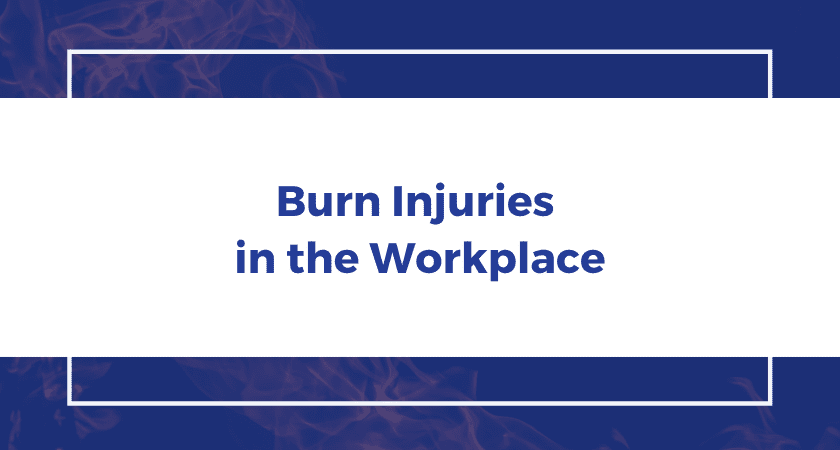A workplace burn injury can be caused by more than just flames. Depending on the line of work a person is in, a burn can be caused by oil, hot steam, or chemicals. Burn injuries are more common in the workplace than we think.
When Do You Need a Burn Injury Lawyer?
Burn injuries incurred in the workplace can be a complex matter. If the worker is burned/injured at work and the employer is responsible, the employee will file a workers’ compensation claim against the employer to recover lost wages and coverage of medical bills. This will be handled between the employee and employer, and a burn injury lawyer is not needed.
However, if a third party is responsible or a cause for contribution to the injuries sustained, a burn injury lawyer should be consulted to see if a personal injury lawsuit against the third party can be pursued. Examples of a third party include someone such as a project manager, engineer or architect, a subcontractor’s employee or a vendor who was working on the job site.
Causes of Workplace Burns
There are a number of causes of workplace burn injuries. Some of the common causes of workplace burns include:
- Electrical burns by exposure to wires, electrical sources, or lightning. Electrical burns generated by electrical current through the body can cause damage to tissues and are one of the most serious burn injuries a person can have.
- Heat burns by fire, oil, hot steam, hot liquid, and other hot objects.
- Cold burns by exposure to cold, wet, and windy conditions.
- Radiation burns / exposure from X-rays, UV sources, sun lamps, etc.,
- Chemical burns from contact with household or industrial chemicals in liquid, solid or gas forms.
- Friction burns caused by contact with hard surfaces (i.e. roads, rugs, etc.,).
- Inhalation injury is a burn that can cause more damage than a physical burn. This is caused by inhalation of toxic fumes (often due to a poorly ventilated area).
Burn Severity
Burns can vary in severity depending on a number of factors. A physician can accurately determine the burn degree. Here is how burn degree is ranked (from mild to severe).
- First Degree: affecting the top layer of the skin with minimal skin damage; Example: a mild sunburn. Most likely does not need medical attention.
- Second Degree: the burn extends beyond the top layer of the skin; often the skin will blister and/or become extremely red and sore.
- Third Degree: the burn affects the epidermis (top skin layer) and dermis (the layer of skin underneath) and may affect the tissue below that. These burns can appear white or charred.
- Fourth Degree: all skin layers are affected and there may be damage to muscle, tendons, and bone. Fourth degree burns may be so extreme that they require amputation.
Occupations That Are At-Risk for Burn Injuries
While many occupations can pose a mild risk for a burn to happen on the job, there are certain occupations that are at a higher risk. These include (but are not limited to):
- Oil field workers
- Electricians
- Construction workers
- Healthcare workers
- Fire Fighters
- Mechanics
- Janitorial Work
- Food Industry Work (chefs, cooks, servers)
If you have sustained a workplace burn injury, call our Bakersfield personal injury law firm to discuss your case at (661) 777-7575 or toll free (800) 585-9262 and request to schedule a no-charge consultation.
